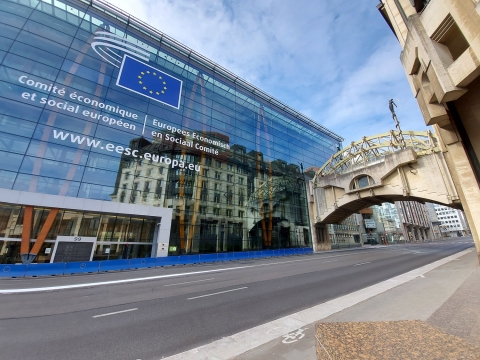European Economic
and Social Committee
The EESC's mid-term renewal explained
All the EESC's top leaders change for the second half of the term of office, which runs from April 2023 to September 2025.
In addition to the President, the two vice-presidents and the bureau, the EESC has also chosen new presidents for its six sections (SOC, ECO, INT, NAT, TEN and REX) and its Consultative Commission on Industrial Change (CCMI).
The President and two vice-presidents are elected by a simple majority during the inaugural session of the assembly. They are chosen from each of the EESC's three groups (Employers' Group, Workers' Group and Civil Society Organisations' Group) in turn, for two‑and‑a‑half‑year terms.
The President is responsible for the orderly conduct of the Committee's business and represents the EESC in its relations with other institutions and bodies.
The two vice-presidents – elected from the two groups to which the president does not belong – are responsible for communication and the budget respectively.
The bureau is the body that takes political decisions at the EESC. Its main task is to set the EESC's objectives, strategies and priorities in all areas and to determine its work programme. Made up of the President, the two vice-presidents, the three group presidents, the section and CCMI presidents, it also includes a variable number of members, which cannot exceed the number of Member States.
The EESC is made up of 329 members from its 27 Member States. They are nominated by their national governments and appointed by the Council of the European Union for a period of five years. They then work independently in the interests of all EU citizens. These members are not politicians but employers, trade unionists and representatives of various sectors of society, such as farming, consumer and environmental organisations, the social economy, SMEs, professionals and associations representing persons with disabilities, the voluntary sector, gender equality, youth, academia, and so on. (ll/dm)
